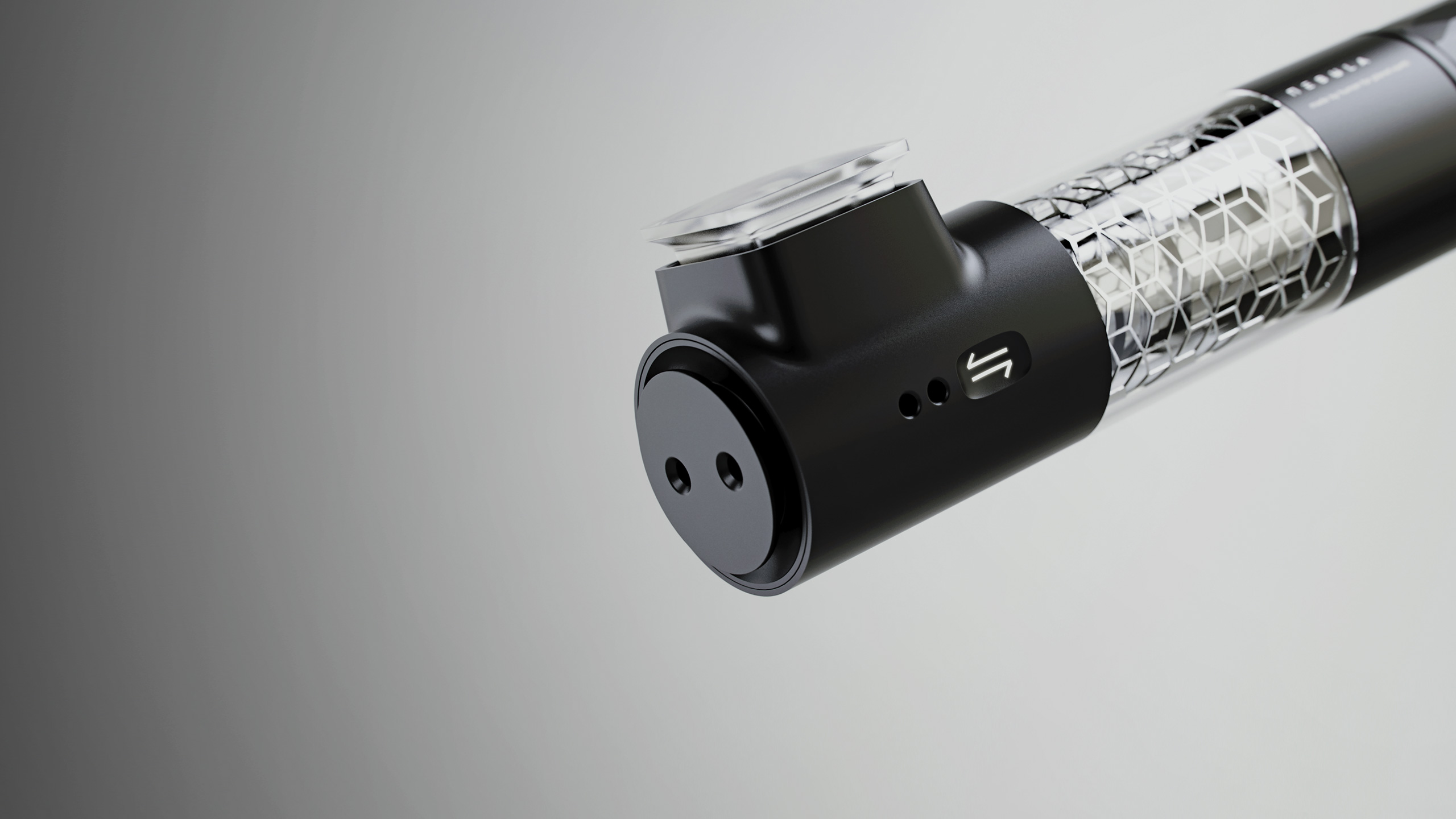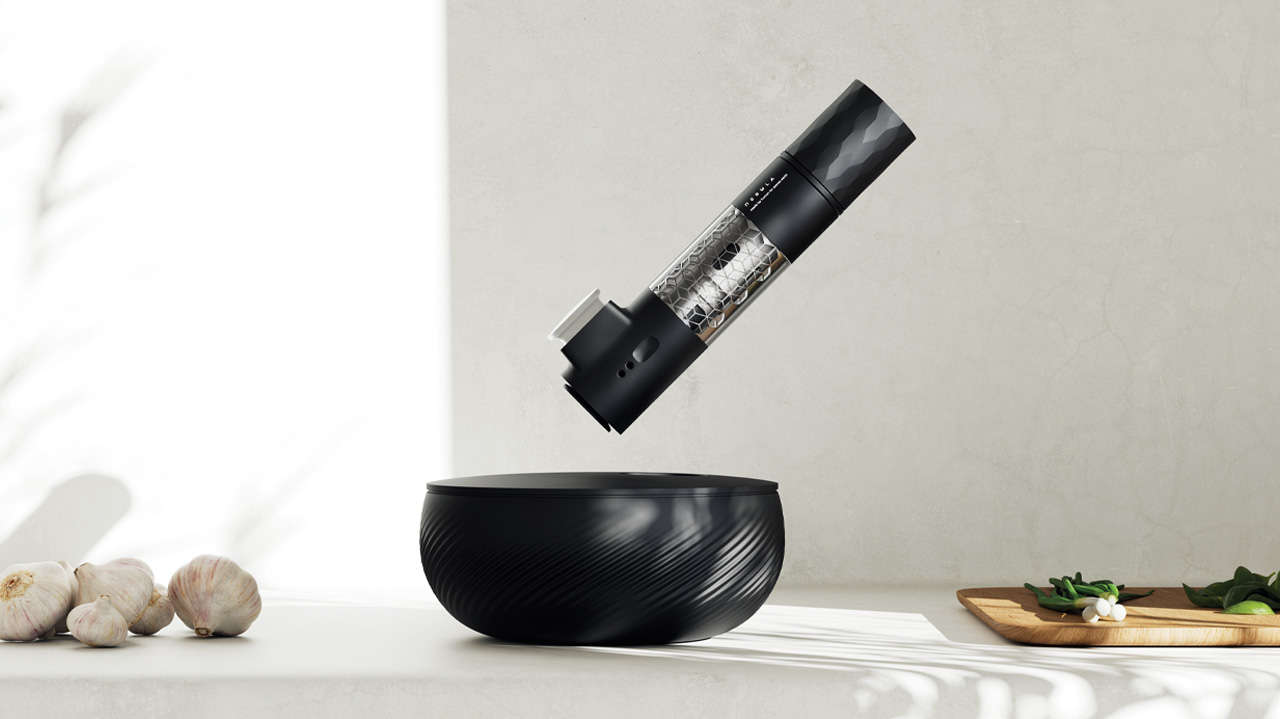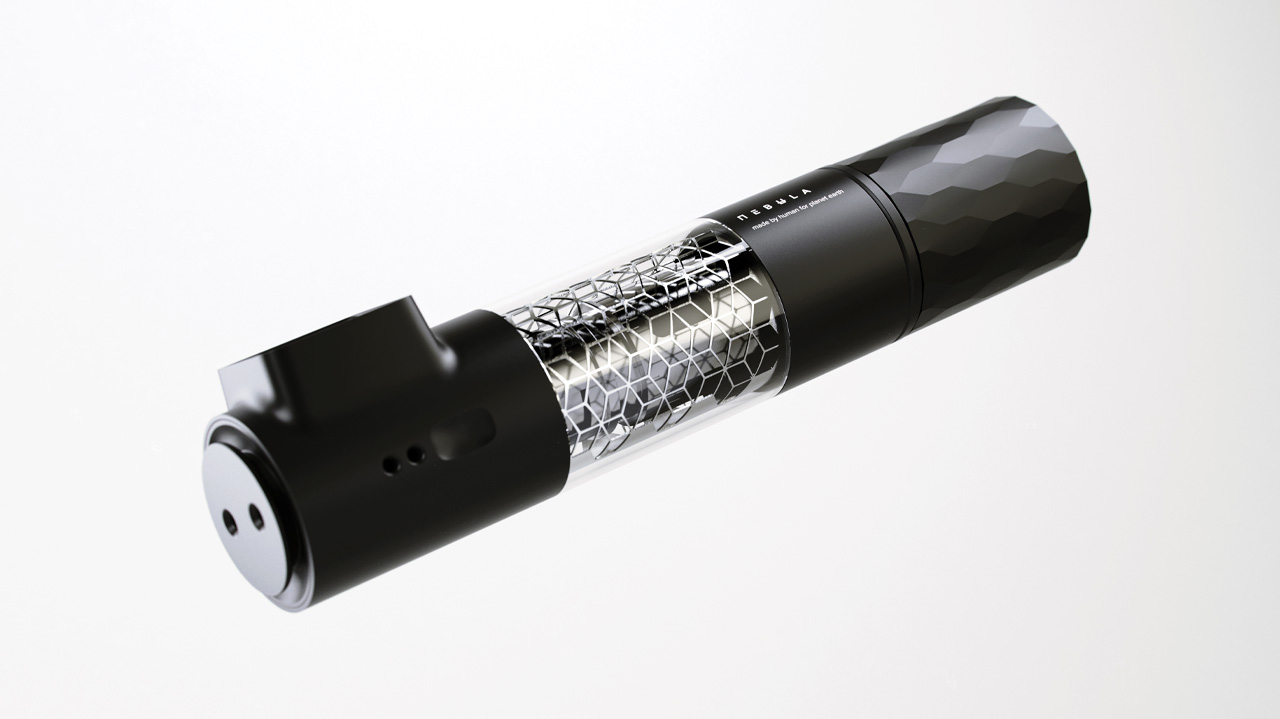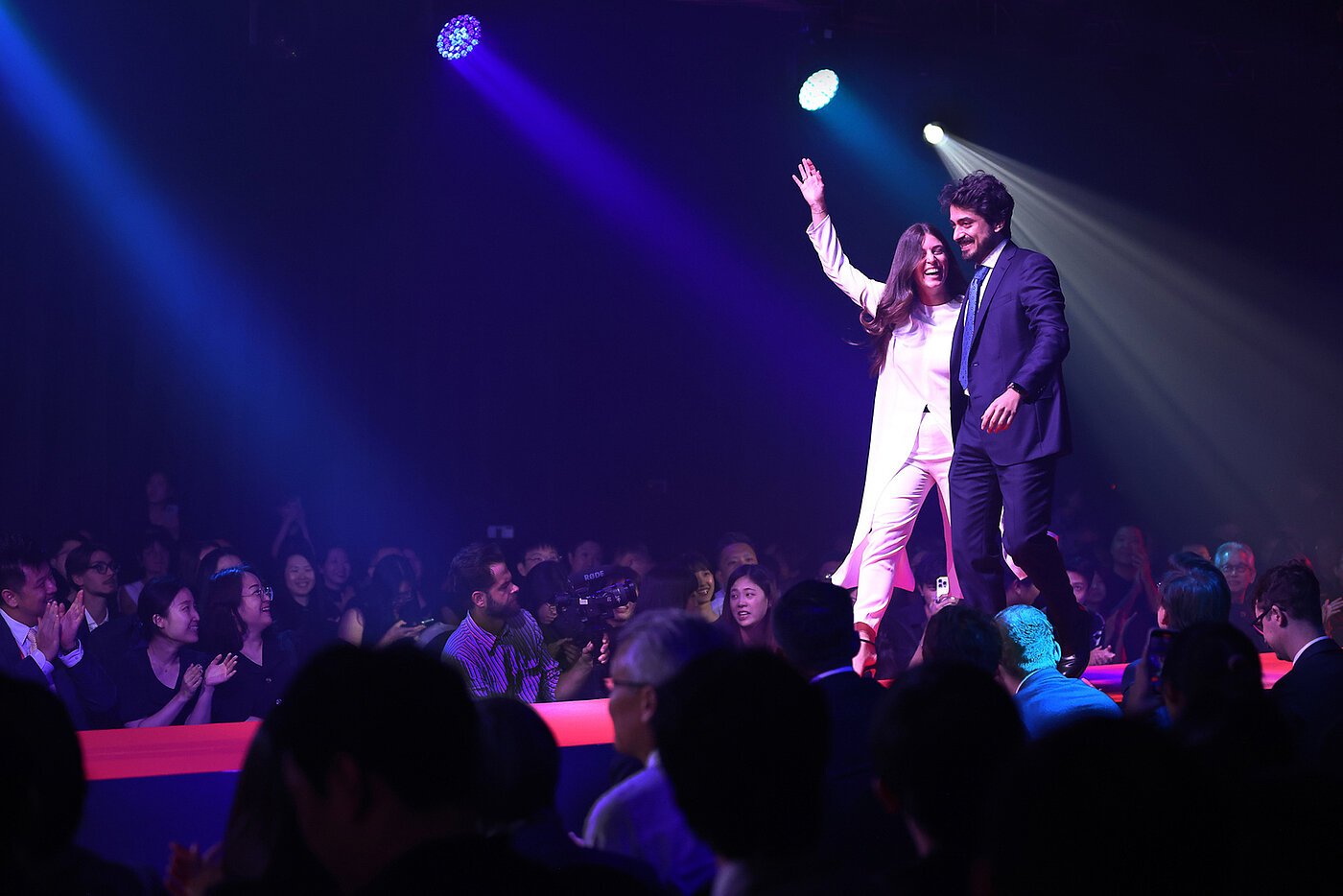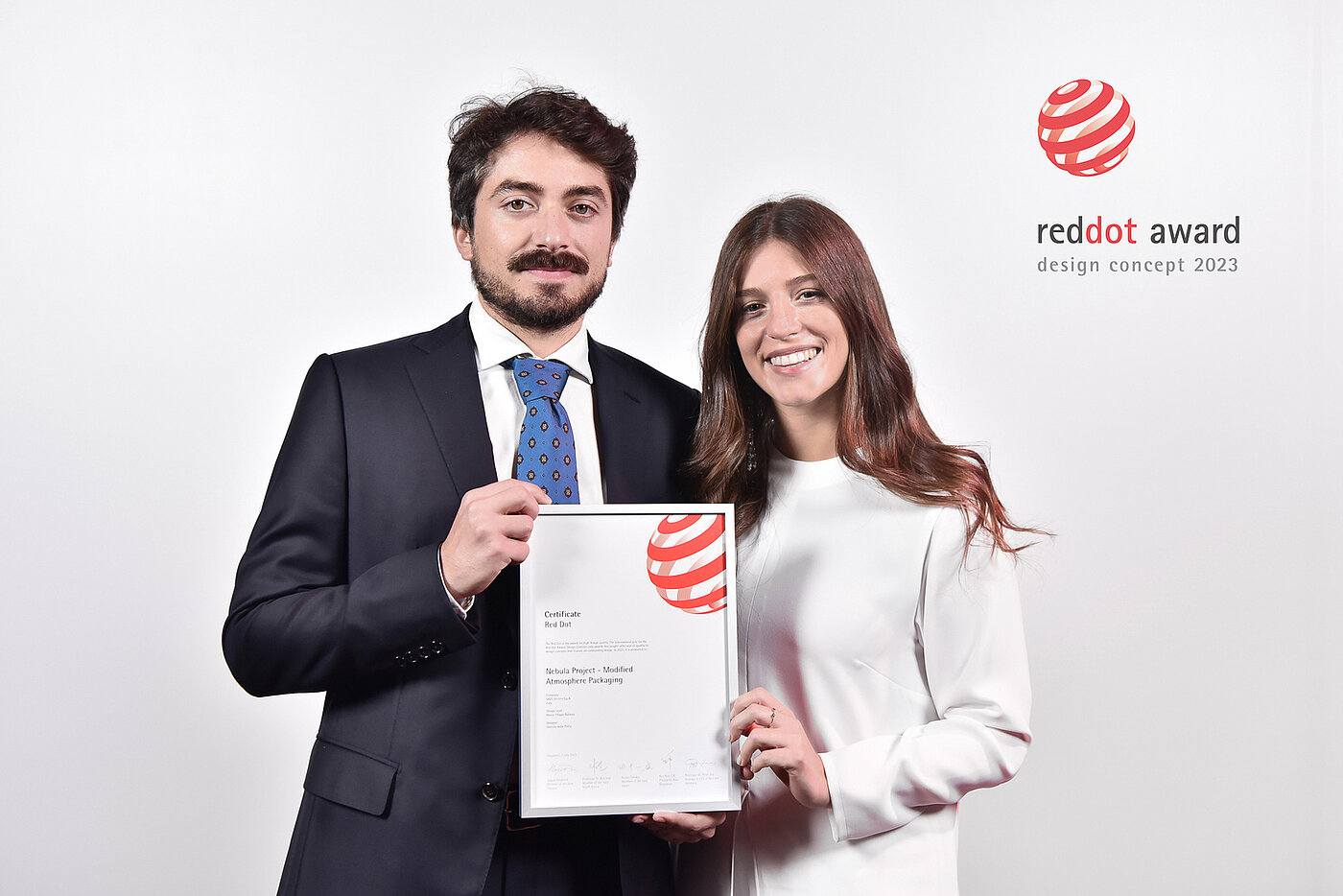Marco Filippo Batavia and Ginevra della Porta share more about their design
Nebula Project - Modified Atmosphere Packaging received a Red Dot in the Culinary and Kitchen Appliances category at the Red Dot Award: Design Concept 2023. Nebula, is the first home food preservation device with a miniaturised MAP system that tackles the environmental impact of food production and annual waste of 930 million tons. The design concept is designed by SAES Getters S.p.A. from Italy. SAES is a material company that specialises in advanced technologies and materials for niche sectors, including getter technologies for high and ultra-high vacuum and gas management technologies that are used in particle accelerators like CERN, fusion reactors and quantum computer.
In this interview, Marco Filippo Batavia, Head of Design House at SAES Group, and Ginevra della Porta, Chief Innovation Officer, tell us more about their design.
What is Nebula?
Nebula Project is a device that incorporates a miniaturised Modified Atmosphere Packaging (MAP) technology system for food preservation. The concept is simple: the original air inside the package, consisting of different gases and vapours, is replaced with a gas mixture typically composed of nitrogen and carbon dioxide.
Nebula utilises pre-mixed capsules containing compressed gas, which can extract the existing internal atmosphere from a container and inject a specific gas composition that is optimal for the food enclosed. This process extends the preservation of all the organoleptic properties of the contents.
In modern design, there is often a preference for uneven weight distribution, where one element dominates significantly over the others. This principle applies to both lines and volumes. However, since Nebula is a product inspired by scientific instruments, its design reflects a rational and analytical language commonly found in laboratories, making it the most logical architectural choice.

Why does the company embark on this journey to develop a consumer product that is so different from its current product range?
We entered in SAES with the goal to develop a consumer product using a specific material, in collaboration with a startup, as part of SAES analysis and scouting of this new technology. We immediately saw the opportunity of combining and integrating in the design several diverse internal technologies to boost technological value. During the design and ideation phases we then understood that the technological value of the product derived from SAES proprietary technologies and knowhow, and we let the startup’s material go. By this point us, the team and the management were all fascinated by Nebula that was the best possible first experience towards the b2c market, as it really leveraged so much of our internal knowhow. SAES was born and grew up starting from the knowhow of vacuum and gas management in multiple different industries, ranging from televisions to particle accelerators, and the fact that the same knowledge was at the basis of the first consumer product was extremely fascinating. This also demonstrated the value that lies inside our labs and in our materials, and that the same value can be brought directly in people’s hands. Saes design house was then created, with the aim of finding killer applications in consumer products for our technologies and materials.
Did you learn any important knowledge while developing this project?
We have established a design methodology that we continue to use in all our projects to this day. Creating a custom product development process is crucial for implementing a design center within a company like SAES, which is structured as a large research laboratory. The goal is to integrate the company's expertise into products intended for consumers.
Nebula draws inspiration from some of the company's iconic products. The core of the device is embedded in a transparent block, allowing a view of the laser-engraved cage of the MAP system. Such cages are an iconic detail of NexTorr pumps, which the company develops for extreme applications such as particle accelerators, fusion reactors, and quantum computers.
Nebula was a pilot project aimed at verifying the integration between SAES and a design center. We discovered that it is not only possible but also how to make it effective. Through Nebula, we also learned experimental projects can lead to the development of entirely new know-how and expertise that can be applied on a larger scale, even to other projects. For example, the development of the miniaturised MAP system for Nebula enabled us to create the smallest high-performance vacuum pump for DRO!D, our second product.
Can you highlight and explain the parts of the project that good design is most necessary for the project to be successful?
In certain industries, the design process is well-structured, and roles are clearly defined. Many specialists interact, each possessing their unique know-how and employing different tools. For a small team, especially in a research and development context like this, having a strong design philosophy acts as a pivot that brings all team elements together. However, solid technical skills are equally crucial. In this regard, the integration between sketching and 3D becomes essential, enabling visualisation and shaping of a form while considering the integration of parts and addressing technical constraints and usability potential simultaneously.
Creating good design in a material company means engaging in creative development analytically, being aware of and familiar with materials, technologies, and respecting the scientific language inherent in the company's DNA. In this sense, the development of product architecture becomes the part where the importance of good design materialises more than any other aspect.
Who benefits the most from winning a Red Dot and how?
Design House is a new division, it has no history and no continuity with the company structure and tradition. Like any break with the past, it represents a gamble, and ours is to grow in the company and allow the company to grow. Big awards like the Red Dot are fundamental recognitions to build our history and leave a mark.
Winning a prestigious award like the Red Dot adds significant value to the team's efforts over these years in building an original and unique reality. For Design House, it signifies growth in value within the company, increased team visibility, and recognition from top management.
Both the team and the company take pride in this achievement. It has only been three years since the establishment of the Design House department, and with a small team, we have accomplished ambitious results. I believe the Red Dot award is a testament to our achievements.
Make plans for the future
From now until 24 April 2024, companies, design studios and young professionals can submit their design concepts and have them evaluated by an international jury of experts in order to win one of the coveted distinctions of the Red Dot Award: Design Concept.
Entire registration period: 1 December 2023 – 24 April 2024
Early Submission 1 December 2023 – 24 January 2024
Standard Submission 24 January 2024 – 13 March 2024
Late Submission 14 March 2024 – 24 April 2024
